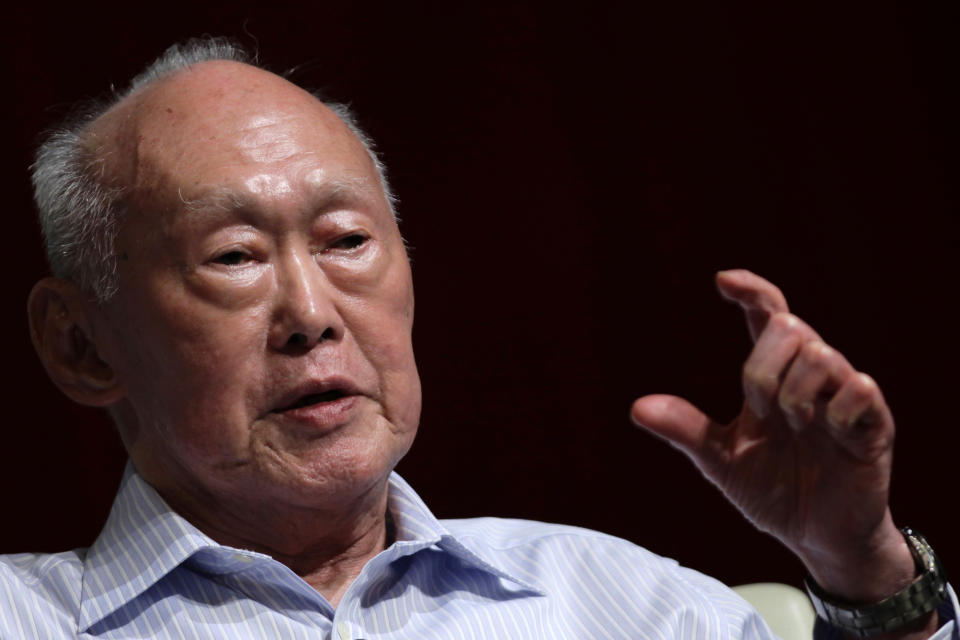COMMENT: Singapore - The race fault lines in caricature country

Once upon a time, there was a nation called Singapore where we laughed at jokes about Chinese, Indians, Pakistanis, Japanese, Italians and the Spanish. We laughed as we watched episode after episode of the 1970s British TV sitcom, Mind Your Language, as it poked fun at the immigrants – and also the English, mind you. Every nationality was fair game.
The fun was clean and simple. Nobody dug deep into the sitcom’s meaning or what the people behind it intended to convey. I can’t remember anyone getting upset about how their race was portrayed. One reviewer said, “Mind Your Language does doubly well by 1970s sitcom standards managing to balance the distinct flavours of lazy xenophobia and smut-heaving misogyny so delicately.”
Nearly 50 years later, some people are getting hot under the collar because of an ad which shows a Chinese man who also appears as an Indian man and a Malay woman, and a response in a satirical video which says Chinese people are “f***ing it up” and shows one of the presenters displaying the middle finger.
What does this say of the state of race relations in a country that celebrates multi-racialism in its national pledge and anthem? Let me start with the government. In a country where the ruling class controls nearly everything in our lives, the responsibility of maintaining racial order must also rest with them.
Leading by example?

Its record on this is patchy, at best. There are enough examples to show where the big boys of government have failed. A list of examples of racism from 1992 to 2019 in Singapore listed in visakanv’s Singapore Blog illustrates my point. The writer has taken examples from newspaper articles and the Internet to show that our race record does not make for a pretty picture.
There are statements and actions from Members of Parliament, a NTUC official, social commentators and the common man. In many of these cases, hardly anything happened to the people who made racist comments.
Before this, all you need to look at is how leaders like Lee Kuan Yew and Lee Hsien Loong have put down the minorities and questioned their loyalty. The former PM labelled Indians as “fractious and “contentious”, the present PM raised eyebrows when he said the loyalty of Malay military officers might be questioned when faced with enemies of the same race and religion…you get the drift?
It is this combination of high-profile Singaporeans making disparaging statements and a lack of clarity on how such voices have been dealt with that has brought about the present uproar over the brownface ad and the sharp video response. Home Affairs and Law Minister K Shanmugam went ballistic only after the video spread online. If he or his ministry had acted immediately after the ad promoting e-pay by Nets had appeared, the video might not even have been produced.
Most of the examples in visakanv’s Singapore Blog show an insensitivity by the majority Chinese community. That community, because of its overwhelming majority in the country, has to take great pains not just to poke fun at the minorities but also embrace them. It is similar to how an elder sibling will protect and take care of his or her brothers and sisters.
Sensitivity is needed
I belong to the minority Indian community. I have always believed that my community must be very sensitive to the other communities, especially to the majority Chinese race. Don’t threaten them or humiliate them in any way. We will be the losers. That view may be outdated in today’s world where younger Singaporeans push and jostle for their place in the Singapore sun.
In my just-released book, “Reluctant Editor”, I was very careful not to have endorsements by Indians. I was concerned that the Chinese community would wonder why I am using Indians, though there are very worthy candidates, who could write one of the blurbs.
Maybe, I was too cautious. Maybe I was worried about accusations that I was pro-Indian. But, I say, it is better to tread carefully and cautiously on matters concerning race in a multi-racial country.
On the surface, our race relations are good. Simmering beneath that surface, a caricature of the different races in unsavoury terms keeps emerging; many of the descriptions don’t cross the line, but that is not good enough.
Those fault lines did exist during my growing-up years. But peace was always maintained as we interacted with different races. We knew what could happen if one race tried to ridicule, even in a casual way, another community.
Today’s Singaporeans are different, having grown up in a free-wheeling environment, and they are prepared to use the Internet to get their views heard. It is this new and difficult environment that the government needs to manoeuvre, and it must ask itself: How could we have stopped the brownface E-Pay ad from blowing up the way it has?
P N Balji is a veteran Singaporean journalist who was formerly chief editor of Today, as well as an editor at The New Paper. He is currently a media consultant and author of the best-selling “Reluctant Editor: The Singapore Media as Seen through the Eyes of a Veteran Newspaper Journalist”. The views expressed are his own.
More commentaries
COMMENT: Is it because I'm Eurasian?
COMMENT: Let's learn to deal with minor racial squabbles on our own



